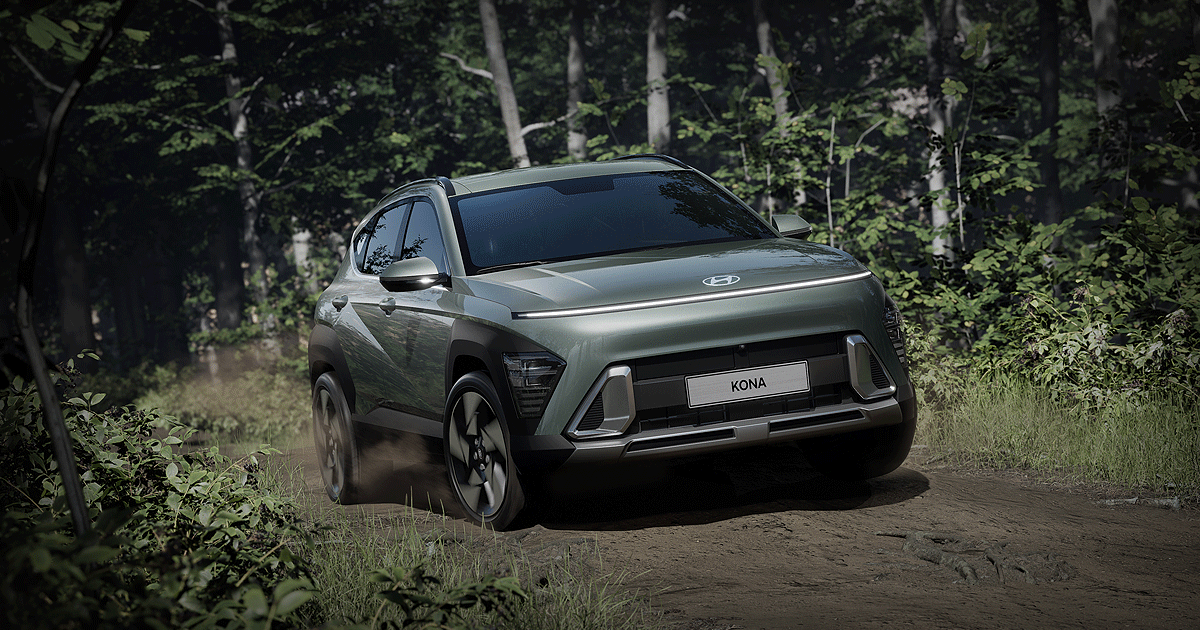
Hyundai’s Kona subcompact crossover is getting a bigger footprint and adding a gasoline-electric hybrid to the lineup.
The second-generation, 2024 Kona will feature larger dimensions, including a 5.9-inch increase in length and nearly 1 more inch of width. The wheelbase grows by 2.4 inches. The new Kona is still billed as an urban runabout but Hyundai says the bigger size will give it more living space and a bolder presence.
Hyundai said the redesign started with the EV, an unusual move for vehicles with multiple powertrains. The styling is more EV-leaning, with a lightbar that stretches across each model’s front end.
The Kona EV sports the pixelated design cues found on Hyundai’s electric Ioniq 5 and upcoming Ioniq 6 stablemates. The gasoline and hybrid variants have a more rugged bumper that incorporates a skid plate design as well as chunkier black wheel arch cladding. The N-Line, also gas-powered, sits lower to the ground and is more aggressively styled in the front and rear, with a wing-shape bumper.
The overall styling of the Kona is more contoured and angular — similar to the design introduced on the latest Tucson midsize crossover for the 2022 model year.
The first-generation Kona debuted in 2018 and is one of Hyundai’s top five sellers. Through November, the Kona logged U.S. sales of 57,000, according to the Automotive News Data & Research Center.
The outgoing Kona offers three gasoline variants and an electric model, which represents about 6 percent of sales, according to data from Motor Intelligence. The EV has a 150-kilowatt motor that generates 201 hp from a 64 kilowatt-hour battery; it’s rated to travel 258 miles on a single charge.
At the top of the model range is the 276-hp Kona N powered by a turbo 2.0-liter inline-four cylinder added for 2022 after the lineup was refreshed. Hyundai’s other N vehicle in the U.S., the Veloster N, was discontinued for the 2023 model year.
Hyundai did not say whether the more powerful N would remain, but referred only to the continuation of the N Line, which is sporty but not as performance oriented as the N. The current N Line has a turbo charged 1.6-liter inline four-cylinder engine with 195 hp.
The 2023 Kona SE and SEL, which would be considered the base trims, use a 2.0-liter inline four-cylinder with 147 hp.
It’s expected that the new Kona will go on sale in the U.S. in the second half of 2023.